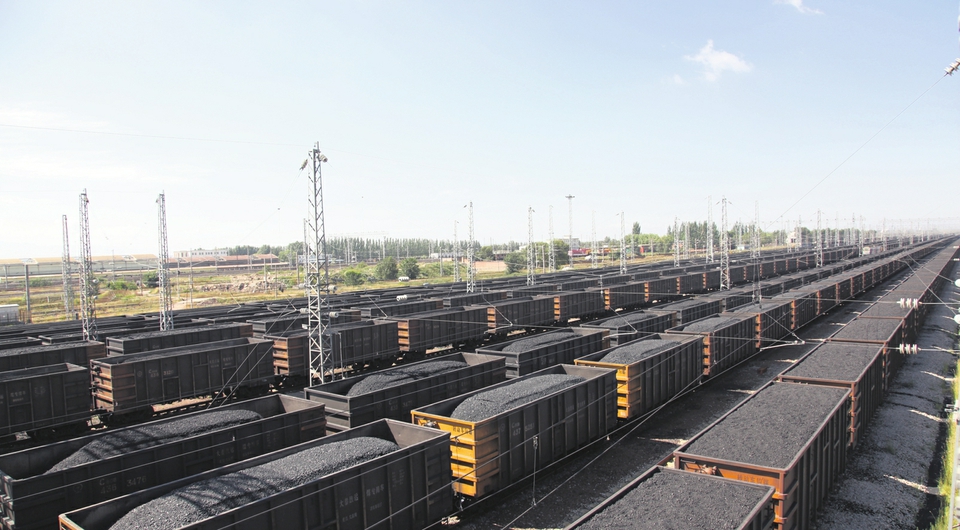
+86-351-4034948
service@wsb.shanxi.gov.cn


Freight trains operated by the Taiyuan Bureau of China Railway Group are ready to deliver Shanxi-produced coal to the rest of the country.Guo Yanjie / For China Daily
Companies engaged in energy production and supply in North China's Shanxi province are making efforts to increase output to meet the country's increasing demand for coal and electricity.
Since the third quarter of last year, some regions in China have suffered power shortages due to the short supply and rising prices of coal and other energy resources.
Shanxi's energy companies, especially coal producers, recognize power shortages pose a challenge to economic development and people's lives, especially in winter.
Jinneng Holding Group is among such companies in Shanxi that have played a crucial role in stabilizing coal supplies.
One of its solutions to ensure the supplies is the use of the latest digital and automatic technologies to improve work efficiency.
In a control room of the Tashan Coal Mine operated by Jinneng Holding, staff member Cao Min uses a computer to control all kinds of mining operations, including coal cutting and conveying in shafts more than 100 meters below the surface.
According to Cao, all the underground mining devices are connected to the control room by a 5G network, making it possible for intelligent and fully automated mining and contributing to a substantial improvement in work efficiency and safety.
Jinneng Holding is not alone in using smart mining to improve efficiency and increase output.
According to the Shanxi Energy Administration, the province now has a total of 154 intelligent coal mining sites, which account for about 68 percent of the total coal output in the province.
Huayang Group based in the eastern Shanxi city of Yangquan is another example using advanced equipment and technologies to increase output.
"Thanks to the upgrades of the conveying system at our train-loading yard, the speed of coal-transport conveyor belts has been increased from 2 meters per second to 2.5 meters per second," said Jia Yi, a manager at Huayang Group's No 1 Coal Mine. "This allows us to ship more than 2,000 metric tons of coal to our clients a day."
The executive added that the efficiency and output were also boosted by technological upgrades in the shafts.
More than a half of the coal mine's output has been delivered to South China's Hainan province via trains and ships, Jia said. He added that Huayang Group had shipped more than 1.7 million tons of coal to Hainan by Dec 22.
According to the Shanxi Energy Administration, Shanxi's daily output of coal has been maintained at 3.3 million tons since October. Its total output during the first 11 months of 2021 amounted to 1.1 billion tons, increasing 12.4 percent or 120 million tons from the same period of 2020.
To ensure the smooth transportation of coal, railway operators in Shanxi have made great efforts to improve efficiency.
The Taiyuan Bureau of China Railway Group is the leading railway transportation operator in Shanxi in ensuring coal supplies to the rest of the country.
To address nationwide shortages in coal supply, the bureau has purchased 100 high-performance locomotives dedicated to coal transportation since October.
The bureau has 642 specialized railway lines linking various coal-mining sites in Shanxi.
The Yumengou freight train station in Taiyuan, which is operated by the bureau, for instance, has specialized lines to connect Shanxi's major coal mines like Du'erping, Guandi and Ximing, according to Ma Jie, deputy chief of the station.
"We have substantially increased train dispatches to ensure coal supplies to the entire country," Ma said.
The executive said that the station was previously used to transport coal to four power plants in Shanxi. "But now we have added another 20 plants to our list of shipments, including 18 in neighboring Henan province and two in Central China's Hubei province."
The station currently dispatches seven trains to transport coal to such destinations every day, which means a daily coal transportation volume of 21,000 tons.
Statistics from the Datong Bureau show that the company transported about 660 million tons of Shanxi-produced coal to the entire country in 2021.
The Datong-Qinhuangdao Railway, which links Datong in northern Shanxi and the port city of Qinhuangdao in Hebei province, is the most important railway in the country for coal transportation. It transported 420 million tons of coal in total last year, according to the bureau.
In addition to coal, Shanxi has also increased the supply of electricity to the rest of the country.
Statistics from the Shanxi Energy Administration show that the province supplied 110.76 billion kilowatt-hours of electricity to other regions during the first 11 months of 2021, which surpassed the total volume of the whole of 2020.
By Yuan Shenggao
Guo Yanjie contributed to this story.